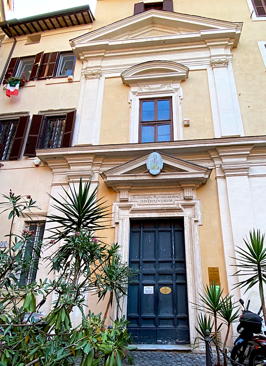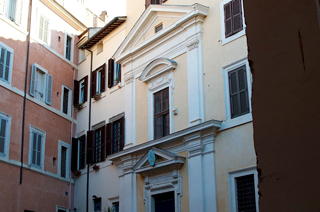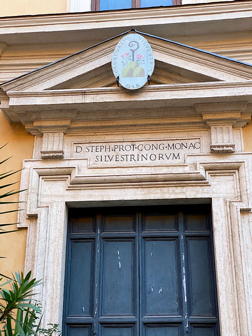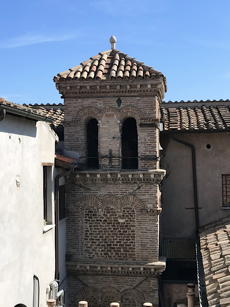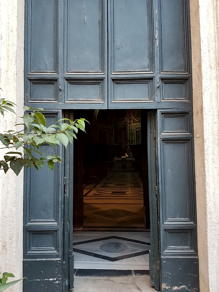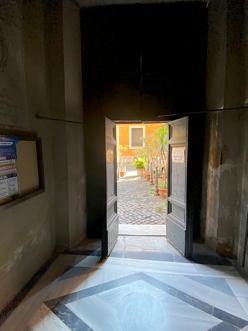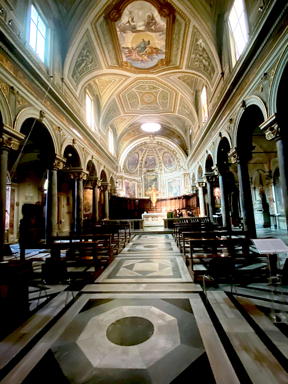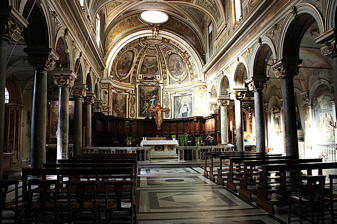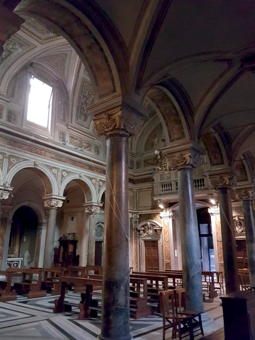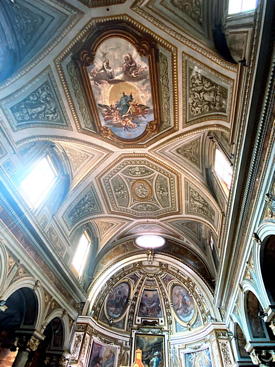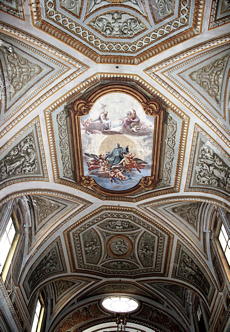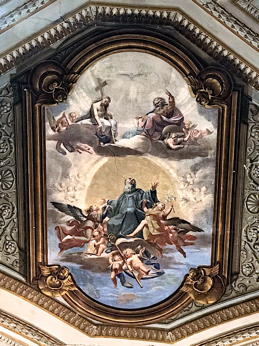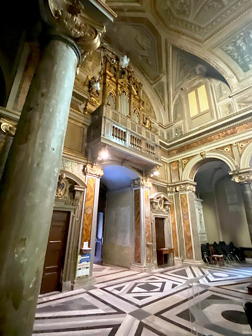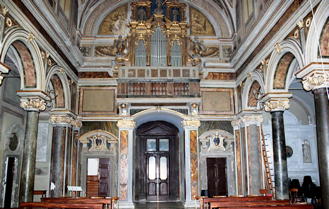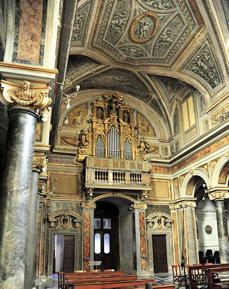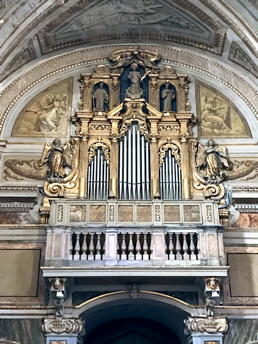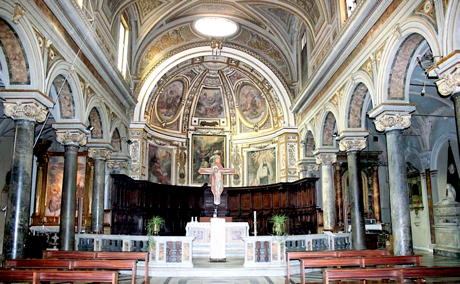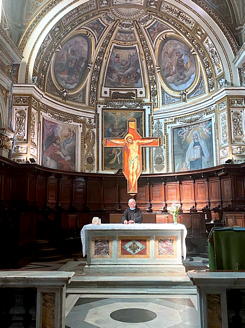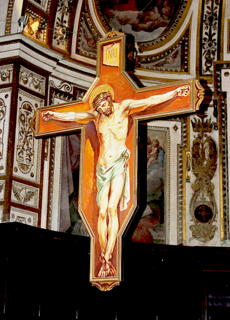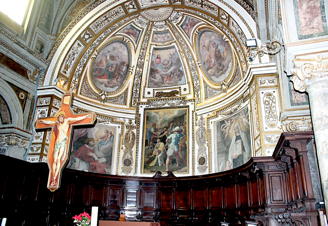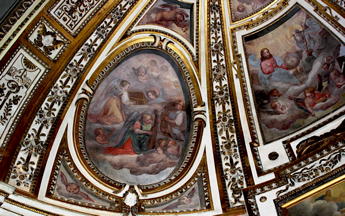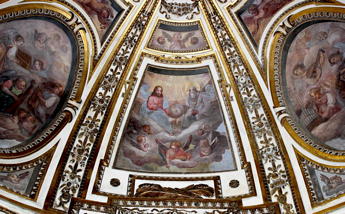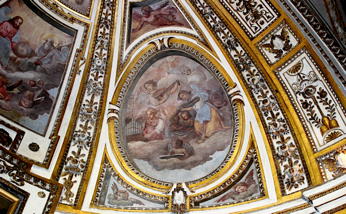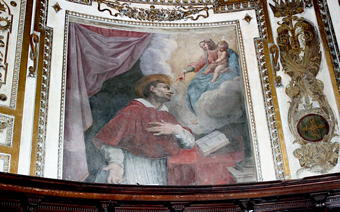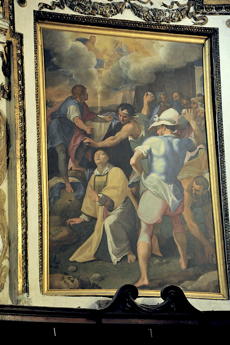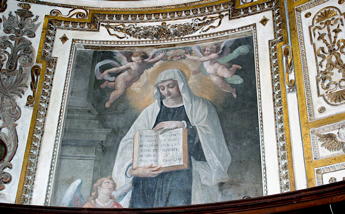The ancient church of Santo Stefano del Cacco is a heavily restored 9th century (?) monastic church in the rione Pigna. The dedication is to the deacon and protomartyr St Stephen.
The present by-name of the church, "Cacco", comes from a statue of the ancient Egyptian god Thoth, which was discovered in the ruins of the neighboring temple of the ancient Egyptian deities Isis and Serapis. The statue was interpreted as that of a monkey, and in popular speech it was called the "Macaco", of which comes the philological distortion "Cacco". The statue is in the Vatican Museum. (See
here)
For reference, a plan of the church is available
here.
The building date of the church is not known for certain, but possibly during the pontificate of Pope Adrian I (772-795). The church was built on the site of the cult chamber of the Temple of Isis and Serapis, also known as the Iseum Campense after its location in the Campus Martius. This temple is the source of the twelve columns of the nave.
In 1563 pope Pius IV (1559-1565) assigned the church to the Sylvestrine Fathers (who still serve the church), founded in 1231 by Saint Silvestro Guzzolini (1177-1267). (The Sylvestrines follow a rule akin to that of St. Benedict.) The order soon thereafter had the church restored in 1564 when the monastery was built which incorporates the Romanesque portico.
Between 1638 and 1643, the church was given a Baroque makeover resulting in its present appearance. Also, a small façade was added to the convent block in front of the church in about 1640. It is thought that the work was designed by Paolo Maruscelli, and executed by Antonio Canziani, at least as regards the façade.
There was a restoration in 1725 by the architect Ludovico Rusconi Sassi, who is buried in the church. In 1857 to 1865 there was another restoration, involving the floor which was re-laid with marble salvaged from the burnt-out San Paolo fuori le Mura. The nave ceiling was also frescoed.
